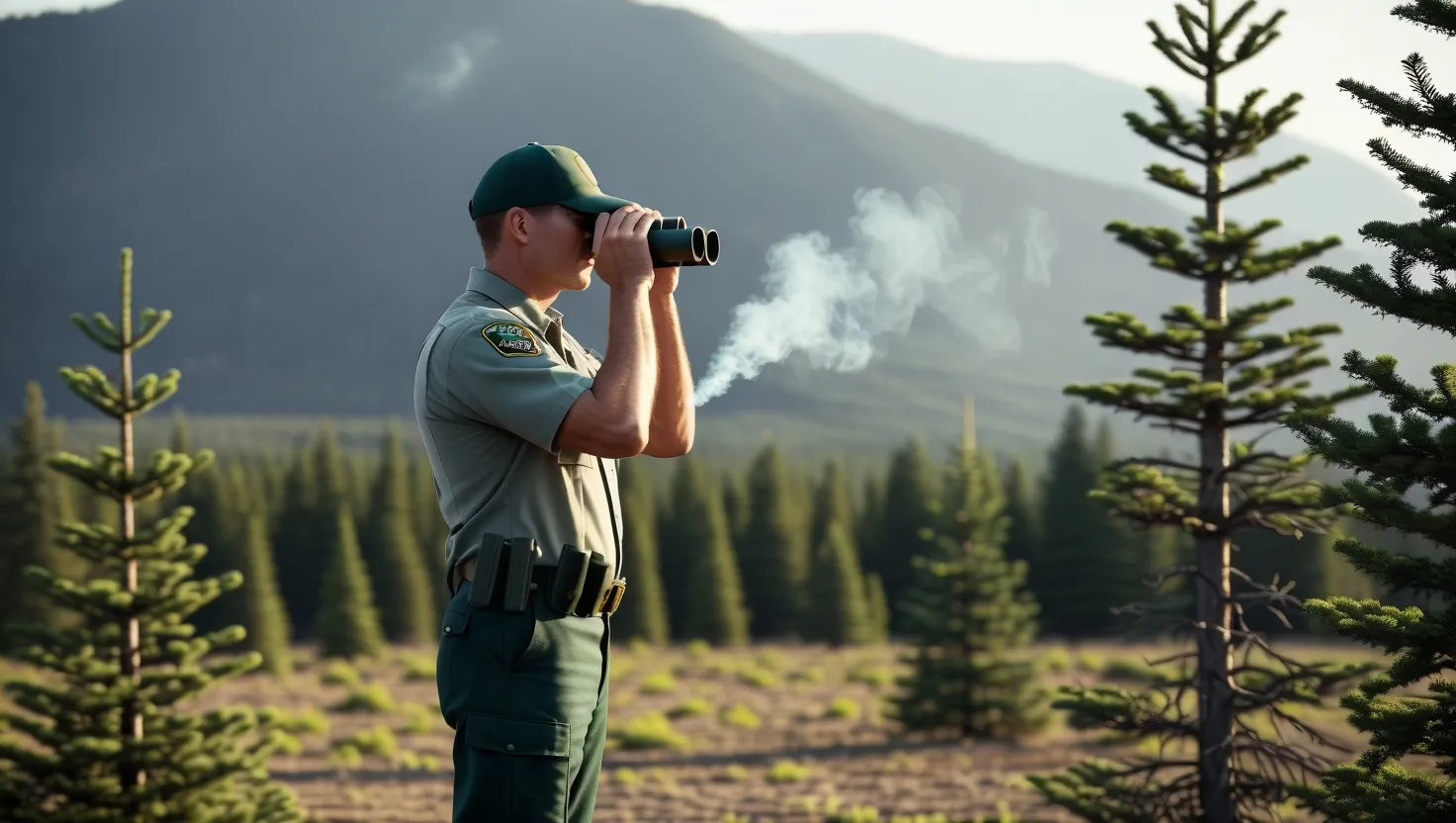As I stand amidst the towering trees, the crisp air filled with the scent of pine and earth, I am reminded of the immense responsibility that comes with being a forest ranger. My name is Jake, and I have embarked on a mission to prevent wildfires, a task that is both daunting and crucial. But as I delve deeper into this endeavor, I find myself entwined in a complex web of non-profit finance, social impact investing, and the pursuit of sustainable economic growth.
The Spark of an Idea
It all began with a spark, quite literally. A small wildfire that could have been catastrophic had it not been for the swift action of our team. As we battled the flames, I realized that prevention was far more effective than reaction. This epiphany led me to start a wildfire prevention campaign, a journey that would take me far beyond the forest.
Raising Funds and Managing Resources
The first hurdle was raising funds. Non-profit finance is a labyrinth of grants, donations, and fundraising events. I quickly learned that securing funding is not just about asking for money; it’s about telling a compelling story that resonates with potential donors. “The best way to find yourself is to lose yourself in the service of others,” Mahatma Gandhi once said. This quote became my mantra as I reached out to communities, explaining how their contributions could save lives and protect the environment.
But raising funds is only half the battle. Managing resources efficiently is where the real challenge lies. Here, I had to balance the books, ensuring that every dollar was spent wisely. It was a steep learning curve, but one that taught me the value of fiscal responsibility and the importance of transparency in non-profit finance.
The Role of Social Impact Investing
As my campaign grew, I began to explore the realm of social impact investing. This approach to investing seeks not only financial returns but also positive social and environmental outcomes. It was a revelation to discover that investors were willing to support causes that aligned with their values, even if the financial returns were not as high as those from traditional investments.
Social impact investing allowed me to tap into a new pool of resources, but it also came with its own set of challenges. I had to demonstrate the impact of our work, showing how every dollar invested was making a tangible difference. This required a level of accountability and reporting that was both rigorous and necessary.
Sustainable Economic Growth
The more I delved into the world of social impact investing, the more I realized the importance of sustainable economic growth. Wildfire prevention is not just about saving trees; it’s about preserving ecosystems that support entire communities. By adopting sustainable practices, we could ensure that our efforts were not only immediate but also long-term.
“Sustainable development is the master key to unlocking the door to a brighter future,” says Ban Ki-moon, the former Secretary-General of the United Nations. These words resonated deeply as I worked to integrate sustainable practices into our campaign. From using eco-friendly materials in our operations to promoting sustainable land use, every decision was made with the future in mind.
Community Education and Engagement
One of the most critical aspects of our campaign was community education and engagement. Teaching people about the risks of wildfires and how to mitigate them was essential. But it wasn’t just about disseminating information; it was about building a community that was invested in the cause.
“Education is the key to unlocking the golden door of freedom,” said George Washington Carver. For us, education was the key to unlocking a safer, more resilient future. We organized workshops, conducted door-to-door campaigns, and even created educational materials for schools. The response was overwhelming, with communities coming together to support our cause.
Collaborative Planning and Management
Wildfires do not respect boundaries, whether they are property lines or administrative borders. This realization led me to the importance of collaborative planning and management. Working with local authorities, other non-profits, and even private landowners was crucial.
“Alone we can do so little; together we can do so much,” said Helen Keller. These words encapsulated the spirit of our collaboration. By pooling our resources and expertise, we could achieve far more than any one of us could alone.
The Power of Early Detection
Early detection is a game-changer in wildfire prevention. Advanced technologies and vigilant communities can identify fires before they spread. This allows for a rapid response, often the difference between containment and catastrophe.
“The early bird catches the worm,” goes the old adage. In our case, the early detection system was our bird, and the worm was the fire before it had a chance to spread.
Building and Infrastructure Design
As we worked to prevent wildfires, we also focused on building and infrastructure design. Using fire-resistant materials and designing landscapes that are less prone to fires can significantly reduce the risk of wildfires spreading.
“Form follows function,” said Louis Sullivan, an architect who understood the importance of design in functionality. For us, the function was safety, and the form was a well-designed landscape that could withstand the threat of wildfires.
The Human Element
Throughout this journey, I was constantly reminded of the human element. Wildfires are not just environmental disasters; they are also personal tragedies. Homes are lost, lives are disrupted, and communities are shaken.
“The greatest glory in living lies not in never falling, but in rising every time we fall,” said Nelson Mandela. This quote resonated deeply as I saw communities come together to rebuild and recover after a wildfire.
Looking to the Future
As I reflect on our campaign, I am filled with a sense of pride and purpose. We have made significant strides in preventing wildfires, but there is still much work to be done. The future is uncertain, but one thing is clear: our efforts must be sustained and expanded.
“Never doubt that a small group of thoughtful, committed citizens can change the world,” said Margaret Mead. I believe in this quote wholeheartedly. Together, we can create a world where wildfires are a rarity, not a regular occurrence.
So, what can you do to help? Here are a few questions to ponder:
- How can you contribute to wildfire prevention in your community?
- What role can social impact investing play in supporting environmental causes?
- How important is sustainable economic growth in preserving our natural resources?
The answers to these questions are not simple, but they are crucial. As we move forward, it is imperative that we continue to learn, adapt, and innovate in our quest to prevent wildfires.
In the end, it is not just about saving forests; it is about preserving a way of life. And as we stand together, united in this cause, we can ensure that the beauty and wonder of nature are protected for generations to come.






